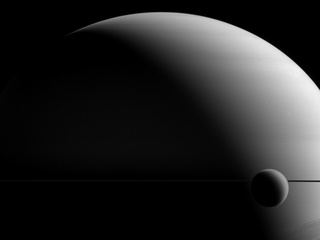Saturn- Second largest planet
Introduction
Adorned with thousands of beautiful ringlets, Saturn is unique among the planets. It is not the only planet to have rings—made of chunks of ice and rock—but none are as spectacular or as complicated as Saturn's.
Like fellow gas giant Jupiter, Saturn is a massive ball made mostly of hydrogen and helium.
Saturn is the sixth planet from the Sun and the second largest planet in our solar system.Surrounded by more than 60 known moons, Saturn is home to some of the most fascinating landscapes in our solar system. From the jets of water that spray from Enceladus to the methane lakes on smoggy Titan, the Saturn system is a rich source of scientific discovery and still holds many mysteries.
Size and Distance
With a radius of 36,183.7 miles (58,232 kilometers), Saturn is 9 times wider than Earth. If Earth were the size of a nickel, Saturn would be about as big as a volleyball.
From an average distance of 886 million miles (1.4 billion kilometers), Saturn is 9.5 astronomical units away from the Sun. From this distance, it takes sunlight 80 minutes to travel from the Sun to Saturn.Orbit and Rotation
Saturn has the second-shortest day in the solar system. One day on Saturn takes only 10.7 hours (the time it takes for Saturn to rotate or spin around once), and Saturn makes a complete orbit around the Sun (a year in Saturnian time) in about 29.4 Earth years (10,756 Earth days).
Its axis is tilted by 26.73 degrees with respect to its orbit around the Sun, which is similar to Earth's 23.5-degree tilt. This means that, like Earth, Saturn experiences seasons.
Structure
Like Jupiter, Saturn is made mostly of hydrogen and helium. At Saturn's center is a dense core of metals like iron and nickel surrounded by rocky material and other compounds solidified by the intense pressure and heat. It is enveloped by liquid metallic hydrogen inside a layer of liquid hydrogen—similar to Jupiter's core but considerably smaller.
It's hard to imagine, but Saturn is the only planet in our solar system whose average density is less than water. The giant gas planet could float in a bathtub if such a colossal thing existed.
Formation
Surface
Atmosphere
Saturn is blanketed with clouds that appear as faint stripes, jet streams and storms. The planet is many different shades of yellow, brown and grey.
Winds in the upper atmosphere reach 1,600 feet per second (500 meters per second) in the equatorial region. In contrast, the strongest hurricane-force winds on Earth top out at about 360 feet per second (110 meters per second). And the pressure—the same kind you feel when you dive deep underwater—is so powerful it squeezes gas into liquid.
Rings
Saturn's ring system extends up to 175,000 miles (282,000 kilometers) from the planet, yet the vertical height is typically about 30 feet (10 meters) in the main rings. Named alphabetically in the order they were discovered, the rings are relatively close to each other, with the exception of a gap measuring 2,920 miles (4,700 kilometers) wide called the Cassini Division that separates Rings A and B. The main rings are A, B and C. Rings D, E, F and G are fainter and more recently discovered.
Moons
Saturn is home to a vast array of intriguing and unique worlds. From the haze-shrouded surface of Titan to crater-riddled Phoebe, each of Saturn's moons tells another piece of the story surrounding the Saturn system. Currently Saturn has 53 confirmed moons with 29 additional provisional moons awaiting confirmation.
Potential for Life
Saturn's environment is not conducive to life as we know it. The temperatures, pressures and materials that characterize this planet are most likely too extreme and volatile for organisms to adapt to.
While planet Saturn is an unlikely place for living things to take hold, the same is not true of some of its many moons. Satellites like Enceladus and Titan, home to internal oceans, could possibly support life.
To get more about it- https://solarsystem.nasa.gov/planets/saturn/in-depth/



Comments
Post a Comment